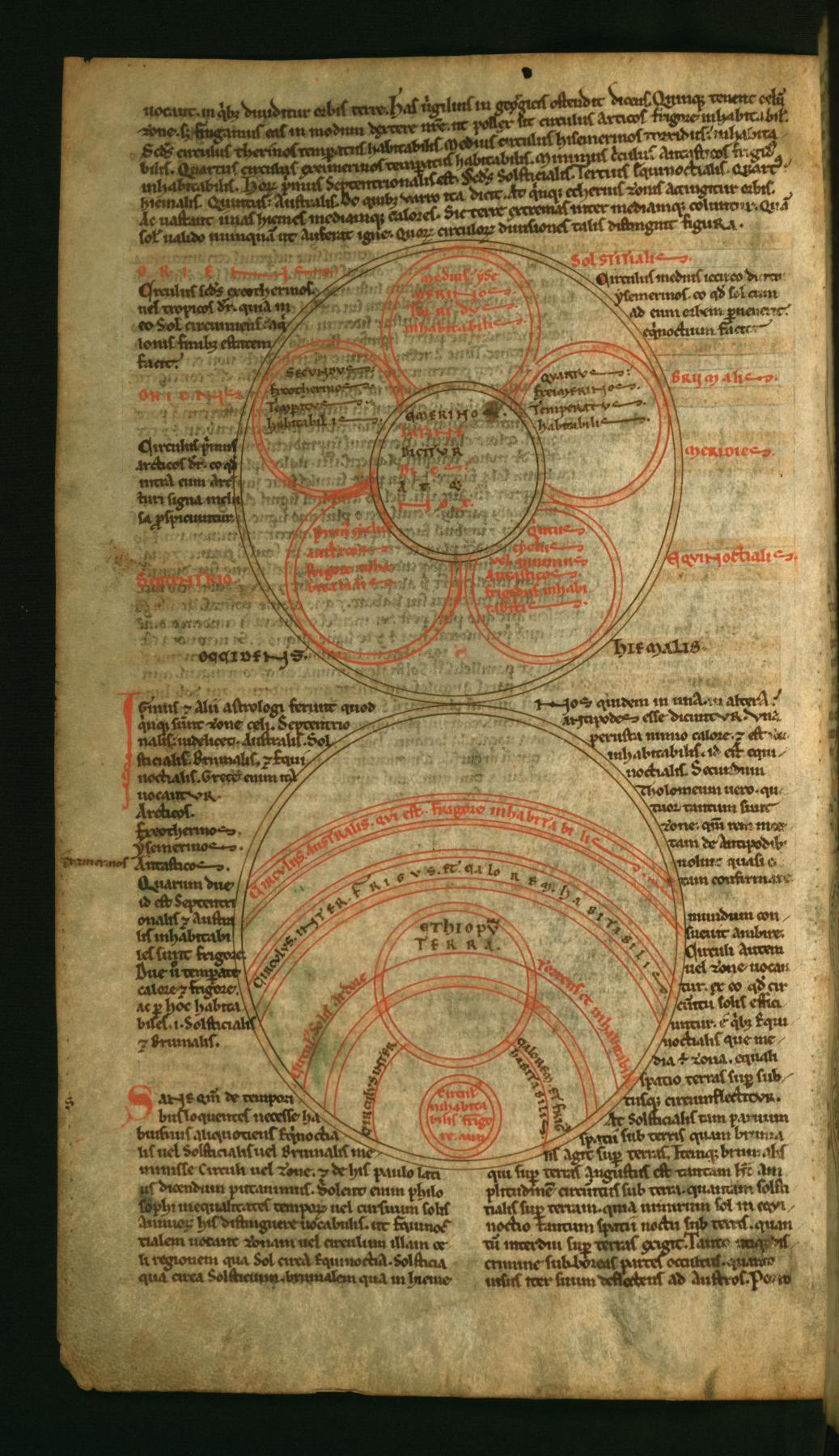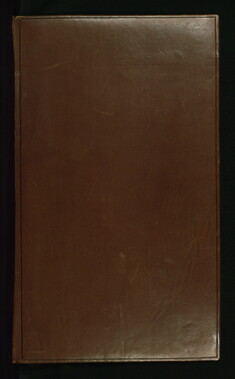Diagrams of the Celestial Climate Zones and Terrestrial Climate Zones
(Manuscripts and Rare Books)
Following ancient writers, medieval scholars identified five climactic zones: the Arctic and Antarctic, or North and South frigid zones; the North and South temperate zones, extending from the Tropic of Cancer to the Arctic Circle and the Tropic of Capricorn to the Antarctic Circle; and the torrid zone between the two tropics. Only the temperate zones were thought to be habitable. In the upper diagram, the five climate zones are shown in an abstract configuration resembling a flower with five circular petals. In his De natura rerum, Isidore of Seville (d. 636 CE) relates the zones to the five fingers of the human hand. As the hand was a fundamental mnemonic tool in the ancient and medieval worlds, Isidore's likening of the petals to fingers makes this diagram an effective memory device. In the lower diagram, the zones are rendered as if projected onto the globe, as arcs and circles.
Provenance
Provenance (from the French provenir, 'to come from/forth') is the chronology of the ownership, custody, or location of a historical object.
Gruel and Englemann Collection, Paris [1]; acquired by Henry Walters, Baltimore, 1903; by bequest to Walters Art Museum, 1931.
[1] no. 131, bookplate on inside upper board
Exhibitions
| 1992 | A World of Foreign Lands. The Walters Art Gallery, Baltimore. |
Geographies
United Kingdom, England (Place of Origin)
Measurements
H: 10 5/8 x W: 6 1/8 in. (27 x 15.5 cm)
Credit Line
Acquired by Henry Walters, 1903
Location in Museum
Not on view
Accession Number
In libraries, galleries, museums, and archives, an accession number is a unique identifier assigned to each object in the collection.
In libraries, galleries, museums, and archives, an accession number is a unique identifier assigned to each object in the collection.
W.73.6V



